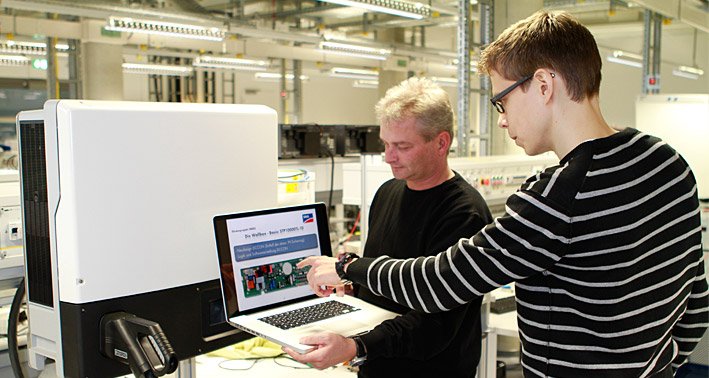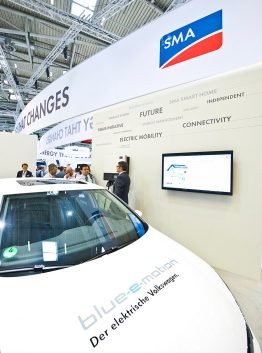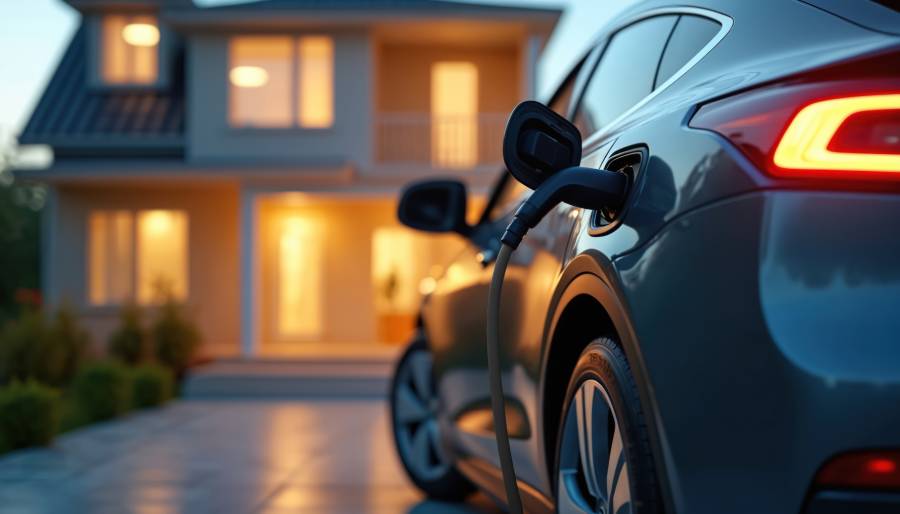SMA Researches E-Mobility

A black-and-white compact car, a thick cable with an oversized plug in the fuel tank opening, a gray box about the size of an inverter, and a PC. At first glance, the whole thing looks a bit like a gas station – only without the smell of gasoline. And I’m not too far off the mark: This is SMA’s research on e-mobility.
Electric Vehicles as Energy Storage Devices
Until recently the SMA site was home to the test setup for the research project on “Intelligente Netzanbindung von Elektrofahrzeugen zur Erbringung von Systemdienstleistungen”, INEES (the intelligent connection of electric vehicles to the grid to provide system services). “Basically, the purpose of our research is to find out whether electric vehicles with rechargeable batteries lend themselves to being used for energy storage,” explained Ralf Andrae, who together with his team is responsible for the project funded by the Federal Environment Ministry. “We want to see whether the vehicle batteries can be charged and then electrically discharged – as needed. If that works well, electric vehicles could be used to support the utility grid in future.”
This system is based on the principle of energy management: The rechargeable battery in an electric vehicle is recharged when electricity is cheap. This could be when the sun is shining and the PV system is supplying electricity, or at night when the demand is not very high. The energy from the rechargeable battery could then be used to power the television or the coffee machine in a Smart Home. But what exactly is SMA’s role in this project?
Charging Station: Connecting the Car to the Electricity Grid
“You need a charging station to charge and discharge the car’s battery. We have developed an inverter for this, what we call a ‘wall box’,” says Ralf. Just like any other wall box, it provides a connection point for the car’s charging cable and enables it to be connected to the electricity grid. The truly innovative aspect of the device is that it allows bidirectional charging, i.e., charging and discharging, and it is designed for home use.
The focal point was developing the control mechanism, as it ensures that the charging station works smoothly with the server of the energy provider Lichtblick and the Volkswagen electric car.
Each Test Phase Brings Us Closer to Our Goal
“Of course, the biggest part of our work went into the development of the charging station at the beginning of the project,” explains Ralf. After the test phase at SMA, we moved to Wolfsburg for the test setup. Here, the compatibility of the SMA charging station and the electric vehicle was tested. At the end of the year, 20 test drivers will take part in a fleet test in Berlin. Forty charging stations are being set up in the greater Berlin area for the test – one charging station at the home and workplace of each of the participants. The outcome of the project will decide whether using a storage device in electric cars is actually worthwhile.
And the outlook is good: The vehicles could act as large-sized means of storing electricity close to the point of consumption in order to offset the fluctuating production of wind and solar energy and stabilize the electricity grid. Additionally, vehicle owners would benefit from being integrated into the electricity market. After all, energy services are valuable and can be instrumental in making electric vehicles affordable more quickly and also more attractive to a large customer base.




That looks like a SMA Tripower, painted white with a DC plug for EV instead of PV. Good idea.
-Adam